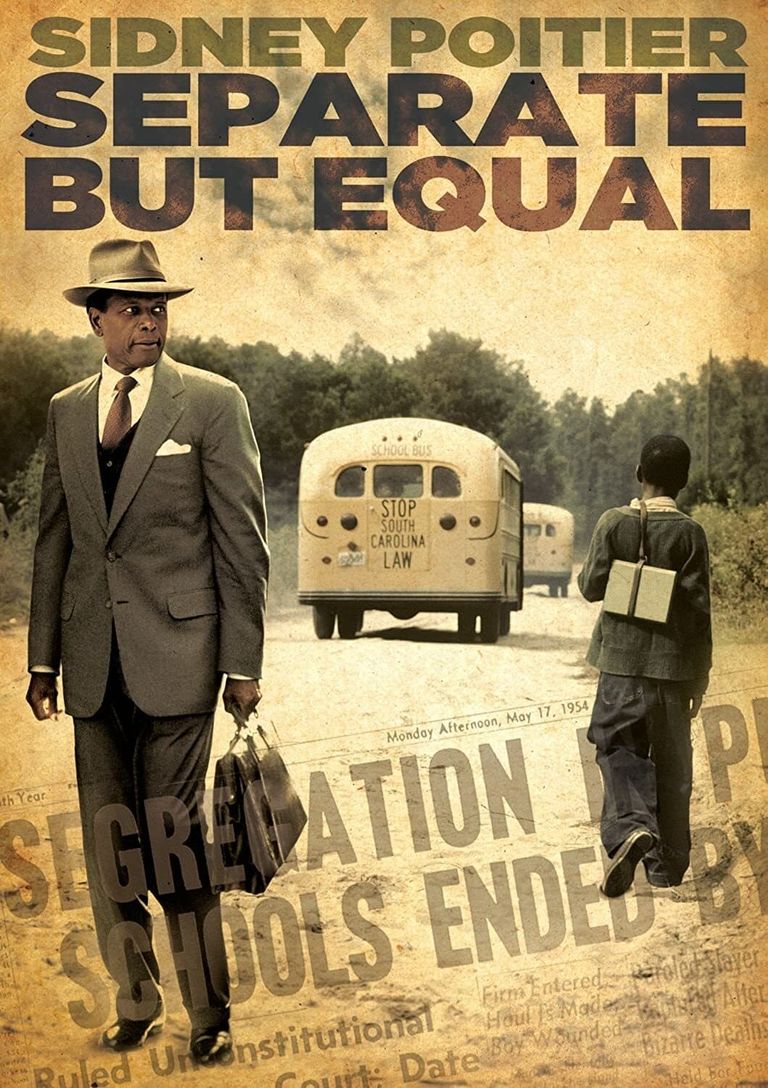
Few modern democracies take the separation of powers doctrine as seriously as the USA. As a result, some of the most pivotal decisions in American history did not occur on battlefields, in Congress, or at the hands of public figures; they transpired behind closed doors, by anonymous old men in black judicial robes. Separate But Equal, a 1991 television docudrama written and directed by George Stevens Jr., chronicles one such decision.
The film's plot unfolds in 1950, a time when the USA still upheld legally sanctioned racial segregation in the Southern states. The legal foundation for this policy was the Separate But Equal doctrine, adopted by the US Supreme Court in 1896, which asserted that black and white Americans could have equal rights while being legally segregated. Reverend De Lanie (portrayed by Ed Hall), the principal of a black school in Southern Carolina, pays little heed to obscure legal doctrines. He is only concerned with the fact that black schools receive fewer financial resources than their white counterparts. In an effort to rectify this disparity, De Lanie takes his case to court and seeks assistance from the NAACP – National Association for the Advancement of Colored People. Thurgood Marshall (played by Sydney Poitier), one of NAACP's top lawyers, realizes that a successful court case could dismantle the Separate But Equal doctrine and pave the way for the end of racial segregation in the USA. Despite intimidation from the Ku Klux Klan and cautious colleagues, Marshall manages to elevate the issue to the Supreme Court. However, the highest American court presents the greatest challenge of all, particularly under the leadership of Earl Warren (portrayed by Richard Kiley), a former California governor not known for his racial tolerance.
Courtroom dramas, especially when based on true events and made for television, can often feel formulaic and didactic. However, the case portrayed in Separate But Equal was too significant to be treated as such. George Stevens Jr. utilizes three hours of runtime to comprehensively cover this event from all pertinent angles - the first segment sets the stage for the case, while the second segment delves into the meticulous and crucial work that unfolded behind closed doors. In doing so, Stevens enlists the talents of many esteemed actors, with Sydney Poitier shining in the role of the legendary lawyer. While other actors may not have as prominent roles, viewers are unlikely to be disengaged. Even those who are not typically drawn to three-hour political dramas should consider giving Separate But Equal a chance. Like few other works, this film showcases democracy at its finest - individuals of integrity and courage willing to confront unpopular issues and rectify past mistakes.
RATING: 6/10 (++)
(Note: The original text was posted on the Usenet newsgroup rec.arts.movies.reviews on January 27, 2003)
Watch the trailer here:
Read more on the blog in Croatian: https://draxblog.com
Explore the English blog here: https://draxreview.wordpress.com/
Support my work by using the Brave browser: https://brave.com/dra011
BTC donations: 1EWxiMiP6iiG9rger3NuUSd6HByaxQWafG
ETH donations: 0xB305F144323b99e6f8b1d66f5D7DE78B498C32A7